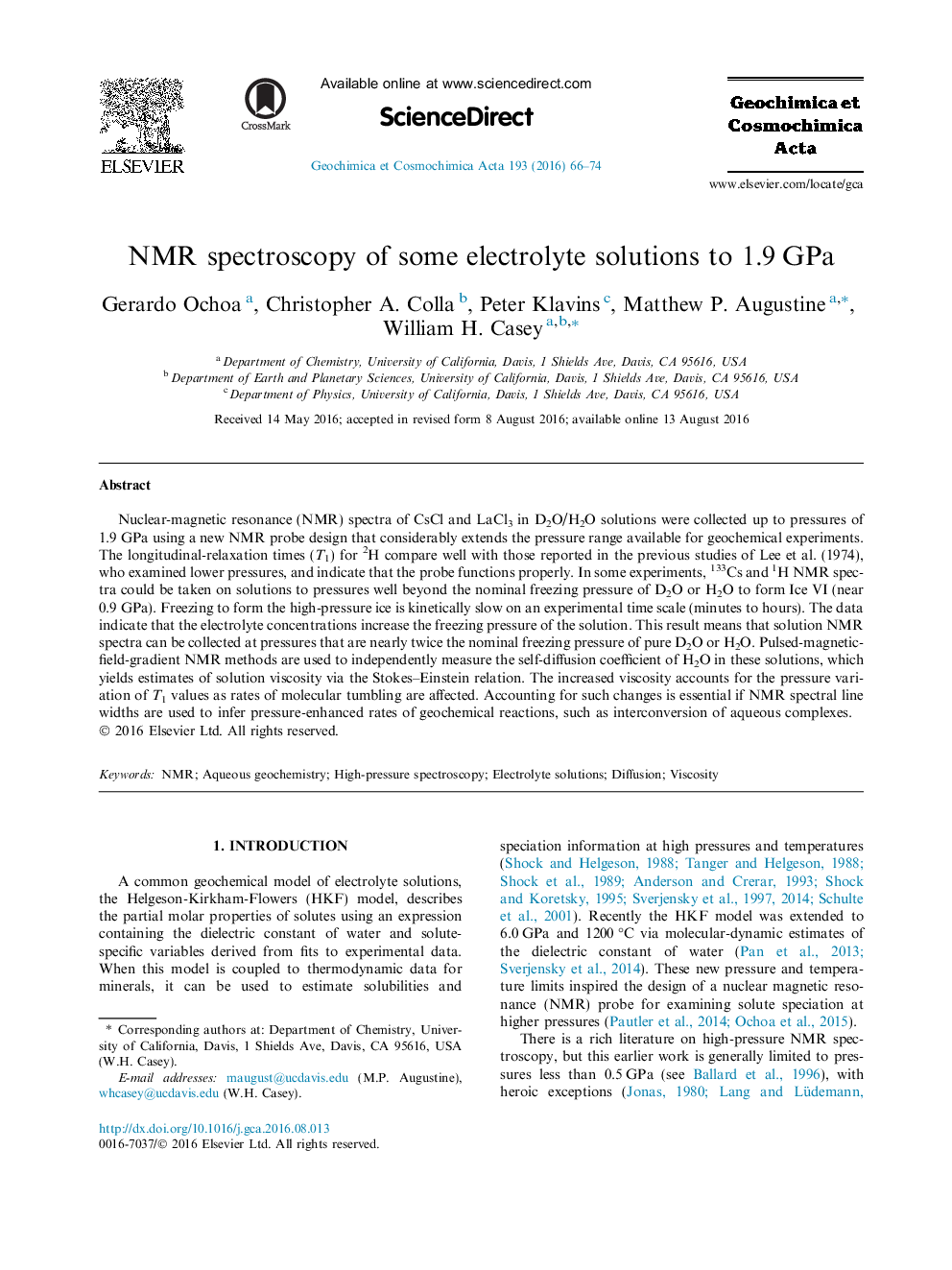| Article ID | Journal | Published Year | Pages | File Type |
|---|---|---|---|---|
| 6437132 | Geochimica et Cosmochimica Acta | 2016 | 9 Pages |
Nuclear-magnetic resonance (NMR) spectra of CsCl and LaCl3 in D2O/H2O solutions were collected up to pressures of 1.9Â GPa using a new NMR probe design that considerably extends the pressure range available for geochemical experiments. The longitudinal-relaxation times (T1) for 2H compare well with those reported in the previous studies of Lee et al. (1974), who examined lower pressures, and indicate that the probe functions properly. In some experiments, 133Cs and 1H NMR spectra could be taken on solutions to pressures well beyond the nominal freezing pressure of D2O or H2O to form Ice VI (near 0.9Â GPa). Freezing to form the high-pressure ice is kinetically slow on an experimental time scale (minutes to hours). The data indicate that the electrolyte concentrations increase the freezing pressure of the solution. This result means that solution NMR spectra can be collected at pressures that are nearly twice the nominal freezing pressure of pure D2O or H2O. Pulsed-magnetic-field-gradient NMR methods are used to independently measure the self-diffusion coefficient of H2O in these solutions, which yields estimates of solution viscosity via the Stokes-Einstein relation. The increased viscosity accounts for the pressure variation of T1 values as rates of molecular tumbling are affected. Accounting for such changes is essential if NMR spectral line widths are used to infer pressure-enhanced rates of geochemical reactions, such as interconversion of aqueous complexes.
